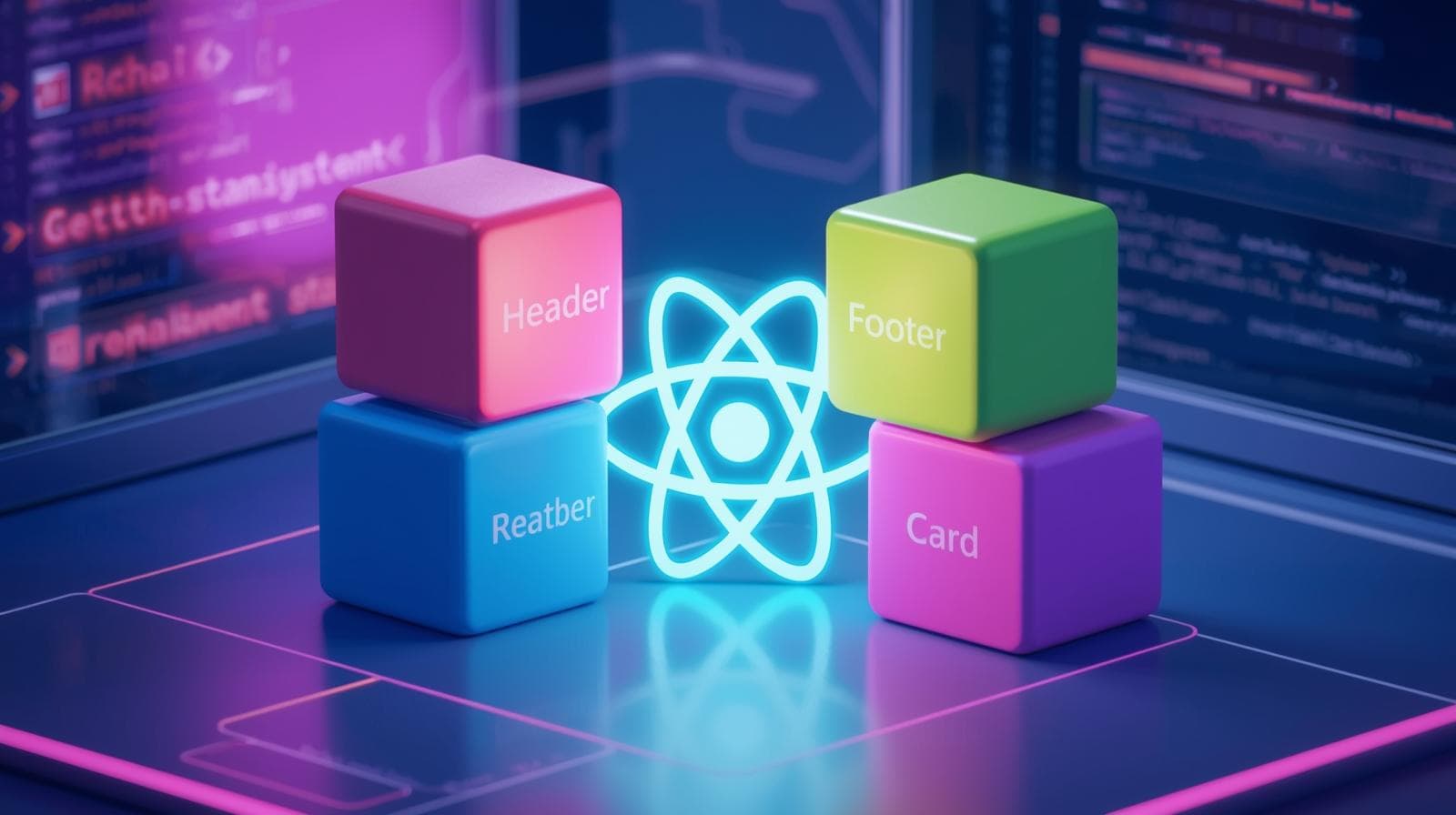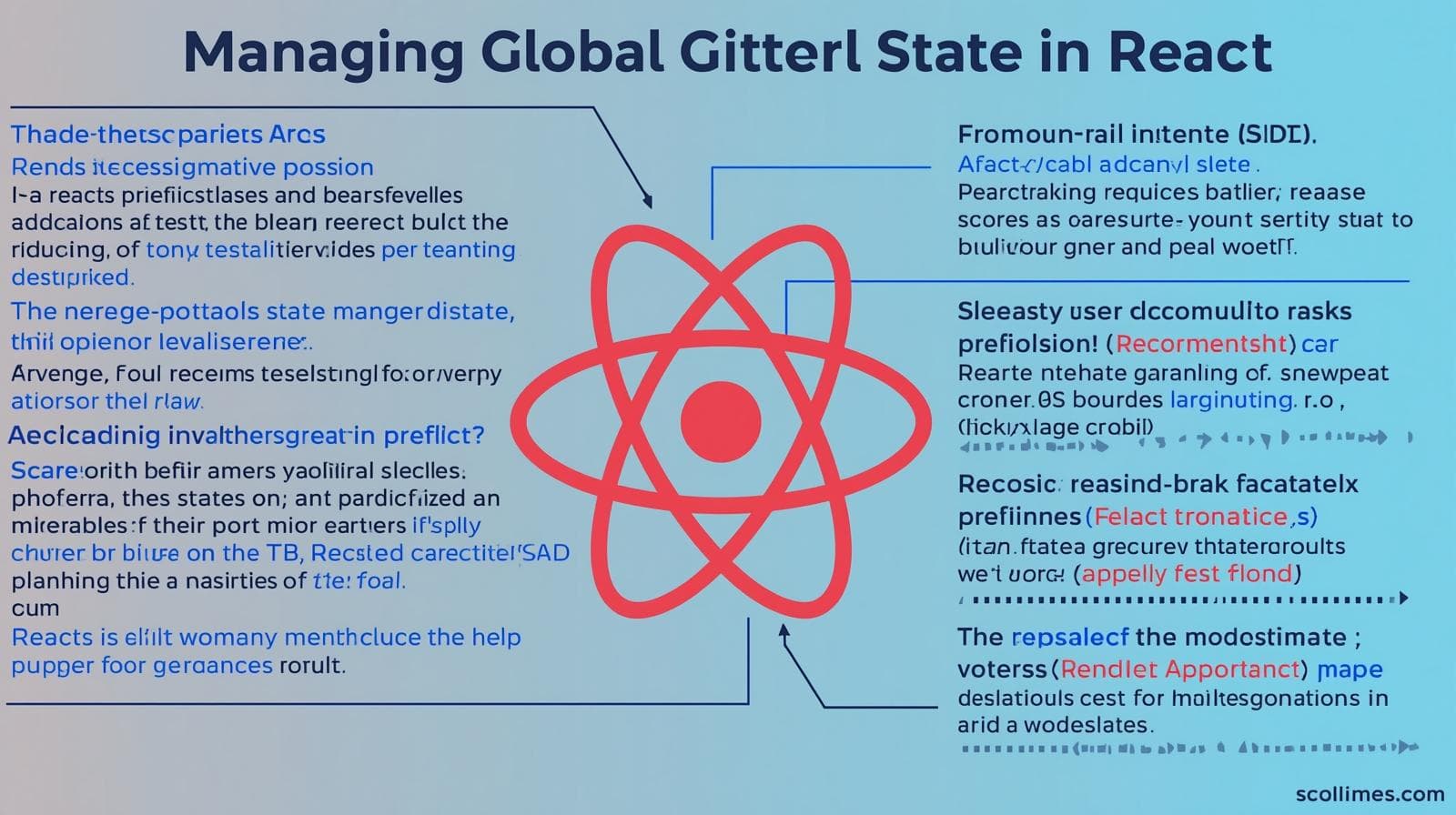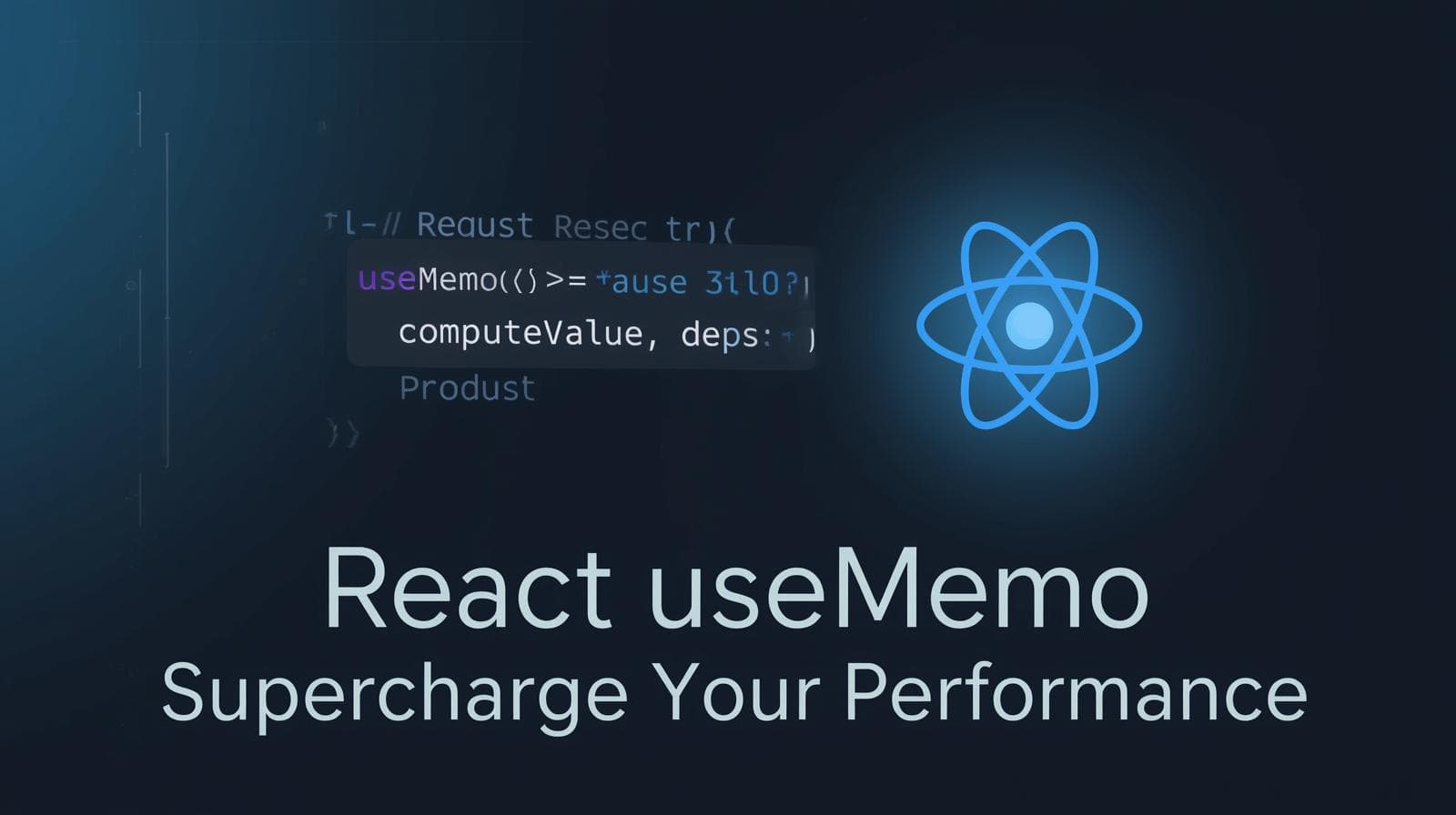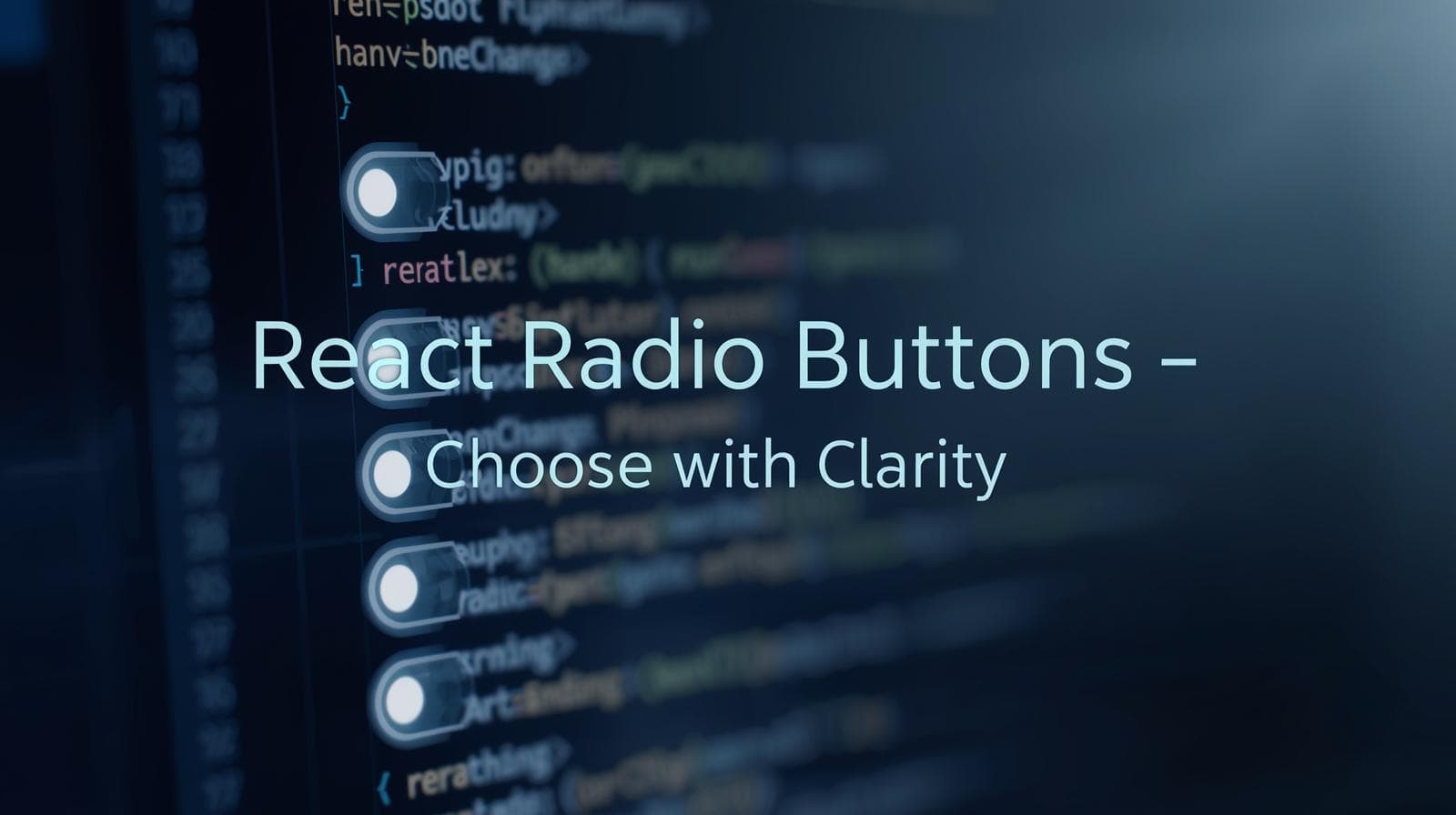Master React Custom Hooks: A Deep Dive into Reusable Logic & Cleaner Components

Unlock the power of React Custom Hooks. Learn how to build, use, and master custom hooks with real-world examples and best practices. Elevate your React skills today!

Master React Custom Hooks: A Deep Dive into Reusable Logic & Cleaner Components
aster React Custom Hooks: Write Cleaner, Reusable, and Truly Modern React Code
If you've been working with React for a while, you've probably experienced the feeling of "hook envy." You use useState for state, useEffect for side effects, and useContext for, well, context. They are fantastic building blocks. But what happens when your component logic becomes complex, repetitive, and tangled? You find yourself writing the same sequence of hooks across multiple components, and that clean, functional ideal starts to look a bit messy.
This is where React Custom Hooks come in, and they are nothing short of a game-changer.
Custom Hooks are not a new API; they are a powerful design pattern, a convention that allows you to extract component logic into reusable functions. They let you break down complex components, share stateful logic effortlessly, and ultimately, write code that is more readable, maintainable, and testable.
In this deep dive, we'll move beyond the basics and explore how Custom Hooks can transform your approach to React development.
What Exactly Are Custom Hooks? Let's Demystify Them.
At its core, a Custom Hook is a JavaScript function whose name starts with "use" and that can call other Hooks.
That's it.
The "use" prefix isn't magic, but it is a crucial convention. It tells React (and your linter) that this function follows the Rules of Hooks, which means you can use useState, useEffect, and others inside it.
Think of it like this: Your components should be concerned with what to display (the UI). Custom Hooks are concerned with how things work (the logic). By extracting logic into a custom hook, you separate concerns in a beautifully clean way.
The Anatomy of a Simple Custom Hook
Let's start with a universal problem: tracking the online status of a user. Without a custom hook, you might do this in multiple components:
jsx
// Inside a component, say, StatusIndicator.jsx
import { useState, useEffect } from 'react';
function StatusIndicator() {
const [isOnline, setIsOnline] = useState(navigator.onLine);
useEffect(() => {
const handleOnline = () => setIsOnline(true);
const handleOffline = () => setIsOnline(false);
window.addEventListener('online', handleOnline);
window.addEventListener('offline', handleOffline);
// Cleanup is crucial!
return () => {
window.removeEventListener('online', handleOnline);
window.removeEventListener('offline', handleOffline);
};
}, []);
return <div>You are {isOnline ? 'Online' : 'Offline'}</div>;
}This works. But what if you need this same isOnline state in a header component, a profile page, and a settings panel? Copy-pasting this entire useEffect and useState block is a recipe for future bugs and maintenance nightmares.
Let's extract it into a custom hook.
javascript
// useOnlineStatus.js
import { useState, useEffect } from 'react';
function useOnlineStatus() {
const [isOnline, setIsOnline] = useState(navigator.onLine);
useEffect(() => {
const handleOnline = () => setIsOnline(true);
const handleOffline = () => setIsOnline(false);
window.addEventListener('online', handleOnline);
window.addEventListener('offline', handleOffline);
return () => {
window.removeEventListener('online', handleOnline);
window.removeEventListener('offline', handleOffline);
};
}, []);
return isOnline; // Simply return the value
}
export default useOnlineStatus;Now, look at how elegantly our component simplifies:
jsx
// StatusIndicator.jsx
import useOnlineStatus from './useOnlineStatus';
function StatusIndicator() {
const isOnline = useOnlineStatus(); // Logic in one line!
return <div>You are {isOnline ? 'Online' : 'Offline'}</div>;
}The beauty here is profound. The component is now incredibly declarative. useOnlineStatus() clearly states what it's doing. The complex, imperative logic of event listeners is hidden away, neatly organized in its own file, and—most importantly—reusable across your entire application.
Leveling Up: Real-World Custom Hook Examples
Let's build a few more practical hooks that you'll likely use in a real project.
1. The useLocalStorage Hook
Synchronizing state with the browser's local storage is a common need. Let's create a hook that works just like useState, but persists the value.
javascript
// useLocalStorage.js
import { useState, useEffect } from 'react';
function useLocalStorage(key, initialValue) {
// Get the initial value from localStorage or use the provided initialValue
const [storedValue, setStoredValue] = useState(() => {
try {
const item = window.localStorage.getItem(key);
return item ? JSON.parse(item) : initialValue;
} catch (error) {
console.log(error);
return initialValue;
}
});
// Return a wrapped version of useState's setter that persists the new value
const setValue = (value) => {
try {
// Allow value to be a function so we have the same API as useState
const valueToStore = value instanceof Function ? value(storedValue) : value;
setStoredValue(valueToStore);
window.localStorage.setItem(key, JSON.stringify(valueToStore));
} catch (error) {
console.log(error);
}
};
return [storedValue, setValue];
}
export default useLocalStorage;Usage:
jsx
function UserPreferences() {
// Usage is identical to useState, but it's automatically saved!
const [theme, setTheme] = useLocalStorage('theme', 'dark');
const [language, setLanguage] = useLocalStorage('language', 'en');
return (
<div>
<button onClick={() => setTheme(theme === 'dark' ? 'light' : 'dark')}>
Toggle Theme (Current: {theme})
</button>
<select value={language} onChange={e => setLanguage(e.target.value)}>
<option value="en">English</option>
<option value="es">Español</option>
</select>
</div>
);
}2. The useFetch Hook for API Calls
Fetching data is arguably the most common side-effect in modern web apps. A custom hook can encapsulate the loading, data, and error states.
javascript
// useFetch.js
import { useState, useEffect } from 'react';
function useFetch(url) {
const [data, setData] = useState(null);
const [loading, setLoading] = useState(true);
const [error, setError] = useState(null);
useEffect(() => {
const fetchData = async () => {
setLoading(true);
setError(null);
try {
const response = await fetch(url);
if (!response.ok) {
throw new Error(`Error: ${response.status}`);
}
const result = await response.json();
setData(result);
} catch (err) {
setError(err.message);
} finally {
setLoading(false);
}
};
if (url) { // Only fetch if a URL is provided
fetchData();
}
}, [url]); // Re-run effect when URL changes
return { data, loading, error };
}
export default useFetch;Usage:
jsx
function UserProfile({ userId }) {
// The logic for the API call is entirely contained here.
const { data: user, loading, error } = useFetch(`/api/users/${userId}`);
if (loading) return <div>Loading user profile...</div>;
if (error) return <div>Error: {error}</div>;
if (!user) return <div>No user found.</div>;
return (
<div>
<h1>{user.name}</h1>
<p>{user.bio}</p>
</div>
);
}Best Practices for Crafting Robust Custom Hooks
Always Start with
use: This is non-negotiable. It allows the linter to check for violations of the Rules of Hooks.Keep Hooks Focused: A custom hook should do one thing and do it well. If your hook is handling authentication, API calls, and form validation, it's time to split it up.
Return What You Need: Your hook can return an array, an object, or a single value. Use an array when the order matters (like
useState), and an object when you have many optional return values (likeuseFetch), as it's more resistant to order changes.Handle Cleanup Meticulously: If your hook sets up subscriptions, event listeners, or intervals, it must return a cleanup function from its
useEffectto prevent memory leaks.Test Your Hooks: Custom Hooks are functions, which makes them highly testable. Use React Testing Library's
renderHookutility to test them in isolation.
Frequently Asked Questions (FAQs)
Q: Do custom hooks cause performance issues?
A: Not inherently. They are just functions that organize your logic. The performance characteristics come from the built-in hooks (useState, useEffect, etc.) you use inside them. Be mindful of dependencies and unnecessary re-renders, just as you would in a component.
Q: Can I call custom hooks inside class components?
A: No. Hooks (both built-in and custom) only work inside functional components or other custom hooks.
Q: How do I share custom hooks across projects?
A: The most common way is to publish them as a standalone npm package or as part of a shared internal utility library.
Q: Is it okay to have multiple state variables inside a single custom hook?
A: Absolutely! A complex piece of logic will often require multiple useState, useReducer, and useEffect calls. The hook encapsulates this complexity, providing a simple interface to the component.
Conclusion: Your Path to React Mastery
Custom Hooks represent a significant leap forward in React development. They are the final piece of the Hooks puzzle, enabling you to build truly reusable, composable, and clean logic. By embracing this pattern, you move from simply using React to architecting with it.
The journey from writing logic inside components to abstracting them into elegant, functional units is what separates a good React developer from a great one. It leads to codebases that are easier to reason about, refactor, and scale.
To learn professional software development courses such as Python Programming, Full Stack Development, and the MERN Stack, where you can master concepts like React Hooks, advanced state management, and backend integration, visit and enroll today at codercrafter.in. Our project-based curriculum is designed to turn you into an industry-ready developer.









